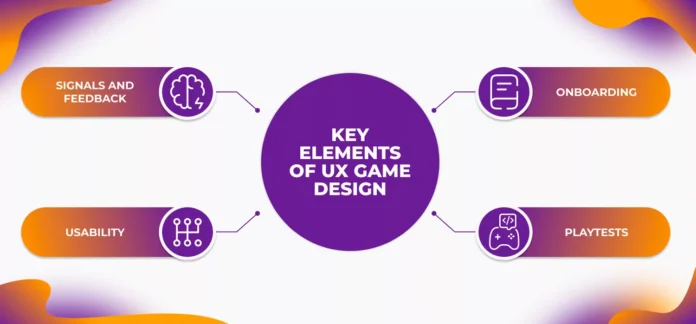The gaming industry is at the forefront of digital design, continually evolving to meet the demands of an ever-growing audience. One of the most significant drivers of this evolution is user experience (UX) design, which has shifted dramatically in recent years. A well-designed UX can make or break a game, influencing player engagement, retention, and satisfaction. In this article, we’ll explore how gaming UX design has changed, the trends shaping its future, and the best practices that ensure a seamless and enjoyable gaming experience.
The Evolution of UX in Gaming Design
In the early days of video games, UX design was often secondary to gameplay mechanics and storylines. However, as games became more complex and technology advanced, the need for a more player-centered approach to design emerged. UX is now seen as crucial to the overall gaming experience, encompassing everything from interface design and navigation to player immersion and emotional engagement.
Several key factors have driven the evolution of gaming UX:
- Increasing Complexity of Games
Modern games often feature vast, open-world environments, intricate mechanics, and multi-layered narratives. This complexity requires intuitive UX design to help players navigate the game world and understand its systems without becoming overwhelmed.
- Diverse Gaming Platforms
Games today are not confined to a single platform. From mobile devices to consoles, PCs, and even virtual reality (VR) headsets, UX design must adapt to a wide variety of interfaces and input methods. Each platform has its own UX challenges, requiring tailored designs that optimize the player experience.
- Rise of Social and Multiplayer Gaming
As gaming has evolved into a social experience, with players collaborating or competing online, UX design has had to integrate features like in-game communication, matchmaking, and cross-platform play. A well-designed multiplayer UX ensures that players can connect seamlessly, navigate social features, and manage teams or guilds easily.
- Player-Centered Design Philosophy
Modern gaming has embraced a player-centered design approach, focusing on accessibility, customization, and inclusivity. UX designers now prioritize the needs and preferences of diverse player demographics, ensuring that games cater to different skill levels, abilities, and gaming styles.
Emerging Trends in Gaming UX Design
- Minimalist Interfaces
One of the most significant trends in gaming UX is the shift toward minimalistic and clean interfaces. Modern games focus on reducing on-screen clutter, presenting information in a streamlined and intuitive manner. HUDs (heads-up displays) have become less intrusive, with contextual cues appearing only when necessary, allowing players to fully immerse themselves in the game world.
Example Games like The Last of Us and Red Dead Redemption 2 have minimalistic HUDs that disappear when not in use, providing a more immersive experience.
- Personalization and Customization
Personalization has become a key trend in UX design, with many games offering customizable interfaces. Players can adjust settings, rearrange HUD elements, and personalize controls to suit their preferences. This trend caters to different playstyles, allowing each player to tailor their experience.
Example Fortnite and Call of Duty let players customize their HUD layouts, sensitivity settings, and other UI elements, creating a more personalized experience.
- Immersive and Intuitive VR/AR Interfaces
As virtual reality (VR) and augmented reality (AR) continue to grow in popularity, UX design is evolving to create immersive, intuitive interfaces for these platforms. Designing for VR/AR requires a deep understanding of spatial awareness, motion controls, and user comfort to avoid disorientation and fatigue. Game designers are increasingly adopting 3D interfaces, natural gestures, and voice commands to enhance immersion.
Example Half-Life Alyx is known for its intuitive VR UX, allowing players to interact naturally with the environment using motion controls.
- Accessibility-Driven Design
The push for inclusivity in gaming has led to more accessible UX design. Developers now consider the needs of players with disabilities, incorporating features such as customizable controls, colorblind modes, and text-to-speech options. Accessibility-driven design ensures that games can be enjoyed by a broader audience, regardless of physical or cognitive abilities.
Example The Last of Us Part II received widespread praise for its extensive accessibility options, offering customizable controls, audio cues, and visual adjustments for players with disabilities.
- Seamless Cross-Platform Experience
As cross-platform gaming becomes more prevalent, UX design is evolving to ensure a consistent experience across different devices. Whether a player is on a console, mobile phone, or PC, they expect a smooth and unified UX that allows them to pick up where they left off, regardless of the platform.
Example Genshin Impact allows players to seamlessly switch between mobile, console, and PC platforms with a consistent UX that makes transitioning effortless.
- Emotion-Driven UX Design
Modern UX design in gaming focuses on eliciting emotional responses from players. Designers are using techniques like dynamic music, adaptive storytelling, and responsive environments to engage players on a deeper emotional level. UX is now intertwined with game design to ensure that players feel more connected to the game world and its characters.
Example Journey creates an emotionally-driven experience by using minimalist UX and environmental storytelling, with no dialogue or explicit directions, leaving players to interpret their journey emotionally.
Best Practices for UX Design in Gaming
- Prioritize Clarity and Simplicity
Even the most complex games should have clear and easy-to-navigate interfaces. Ensure that key game mechanics, settings, and progress indicators are presented simply and intuitively, reducing the learning curve for players.
- Focus on Player Feedback
Continuous feedback from players is essential for improving UX. Use beta testing, surveys, and community engagement to understand player preferences and pain points, iterating designs based on real-world feedback.
- Design for Inclusivity and Accessibility
Ensure that games are accessible to a wide range of players. Incorporating features like remappable controls, subtitles, and colorblind modes not only enhances inclusivity but also creates a more positive gaming experience for all users.
- Optimize for Multiple Platforms
Whether designing for mobile, console, or VR, ensure that the UX is optimized for the platform’s unique controls and user expectations. Consistency in design across platforms will also ensure a unified experience for players who switch between devices.
- Keep Immersion in Mind
A well-designed UX should not disrupt gameplay immersion. Interfaces should be integrated seamlessly into the game world, with non-intrusive HUDs and intuitive navigation that allow players to focus on the game itself rather than the interface.
Conclusion
The landscape of UX design in gaming has changed dramatically, driven by the need for player-centered experiences, immersive gameplay, and platform diversity. From minimalist interfaces and VR integration to accessibility and emotional engagement, UX design trends continue to evolve, reshaping how players interact with games. By following best practices, game developers can create experiences that not only engage and excite players but also ensure long-term satisfaction and loyalty in an increasingly competitive market.

